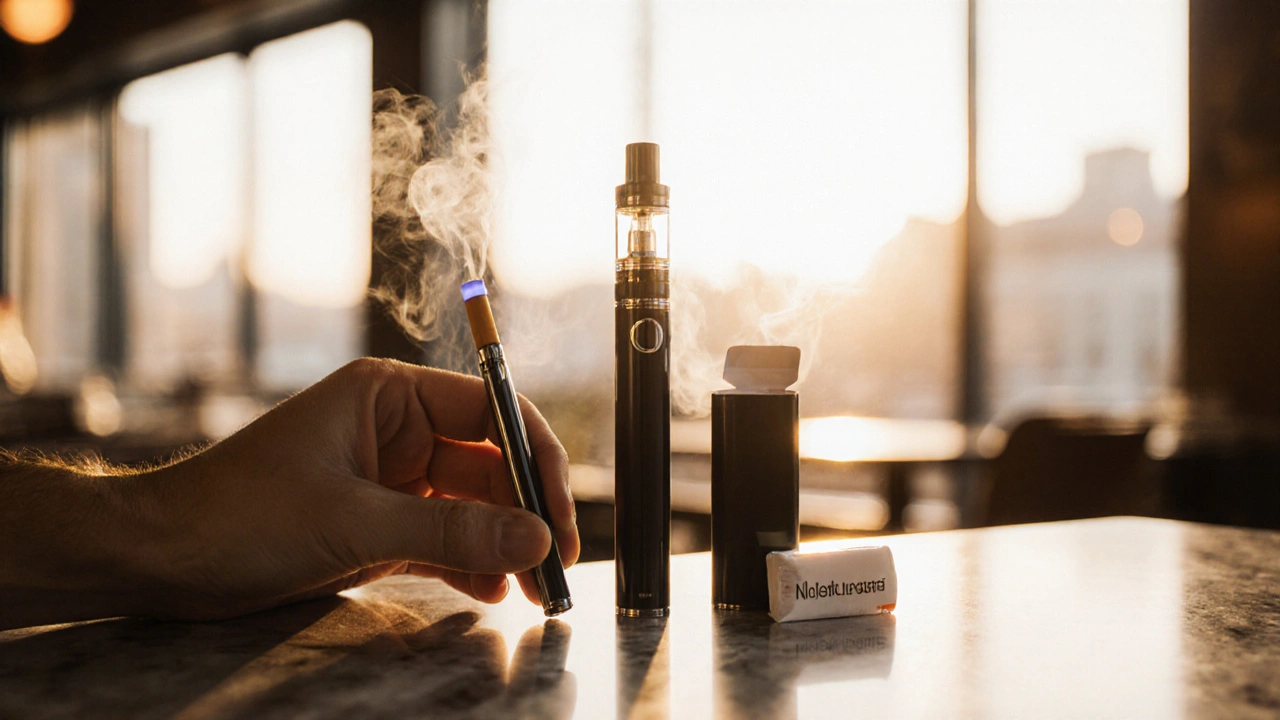Heated Tobacco: What It Is, How It Works, and What You Need to Know
When you hear heated tobacco, a nicotine delivery system that warms tobacco without burning it. Also known as heated tobacco products or HTPs, it’s designed to release nicotine and flavor while reducing smoke and some harmful chemicals compared to traditional cigarettes. Unlike vaping, which uses liquid, heated tobacco actually uses real tobacco leaves—just heated to a lower temperature. This isn’t magic. It’s science. Companies like IQOS, Glo, and Ploom developed these devices to offer an alternative for smokers who aren’t ready to quit nicotine but want to cut down on smoke and ash.
Heated tobacco isn’t risk-free. It still delivers nicotine, which is addictive, and it still exposes users to toxins—just fewer than regular cigarettes. Studies from public health agencies show it may reduce exposure to certain carcinogens, but long-term effects aren’t fully known yet. It’s not a quit-smoking tool. It’s a harm reduction option. People use it because it feels more like smoking—same hand-to-mouth motion, same ritual, same taste—but without the fire, the smell, or the ash on their clothes. It’s also not the same as e-cigarettes. Vapes vaporize liquid; heated tobacco heats solid tobacco. That difference matters for how your body reacts.
Some users switch to heated tobacco because they’re tired of the stigma around smoking. Others use it in places where smoking is banned but vaping isn’t clearly regulated. In countries like Japan, South Korea, and parts of Europe, these products have gained real traction. But in the U.S., the FDA hasn’t approved them as safer alternatives—only as modified risk products under strict review. That means claims like "less harmful" must be backed by data, and manufacturers can’t say they’re safe.
What you won’t find in these devices is a magic bullet. They don’t cure addiction. They don’t eliminate health risks. But if you’re a current smoker looking for a less damaging option, heated tobacco gives you something real: fewer fires, less odor, and lower levels of some toxins. It’s not about switching to something perfect—it’s about switching to something less bad.
Below, you’ll find real-world guides on how these products interact with medications, what side effects users report, and how they compare to other nicotine delivery methods. No fluff. No marketing. Just what people are actually experiencing—and what the science says about it.

Future of Smoking: Emerging Trends & Alternatives
- Oct, 12 2025
- 10
Explore the latest smoking trends, emerging nicotine alternatives, health impacts and regulatory changes shaping the future of smoking.
Categories
- Health and Wellness (51)
- Medicine (36)
- Health and Medicine (23)
- Women's Health (9)
- Mental Health (8)
- Men's Health (7)
- Beauty and Wellness (4)
- Health Information (4)
Archives
- December 2025 (12)
- November 2025 (25)
- October 2025 (27)
- September 2025 (14)
- August 2025 (3)
- July 2025 (2)
- June 2025 (2)
- May 2025 (3)
- April 2025 (4)
- March 2025 (4)
- February 2025 (2)
- January 2025 (3)
- online pharmacy
- medication safety
- dietary supplement
- health benefits
- dietary supplements
- prevention
- fertility
- online pharmacy Australia
- treatment
- treatment options
- benefits
- connection
- drug interaction
- drug interactions
- pregnancy
- Cancer Treatment
- depression medication
- antidepressants
- quality of life
- anxiety treatment
